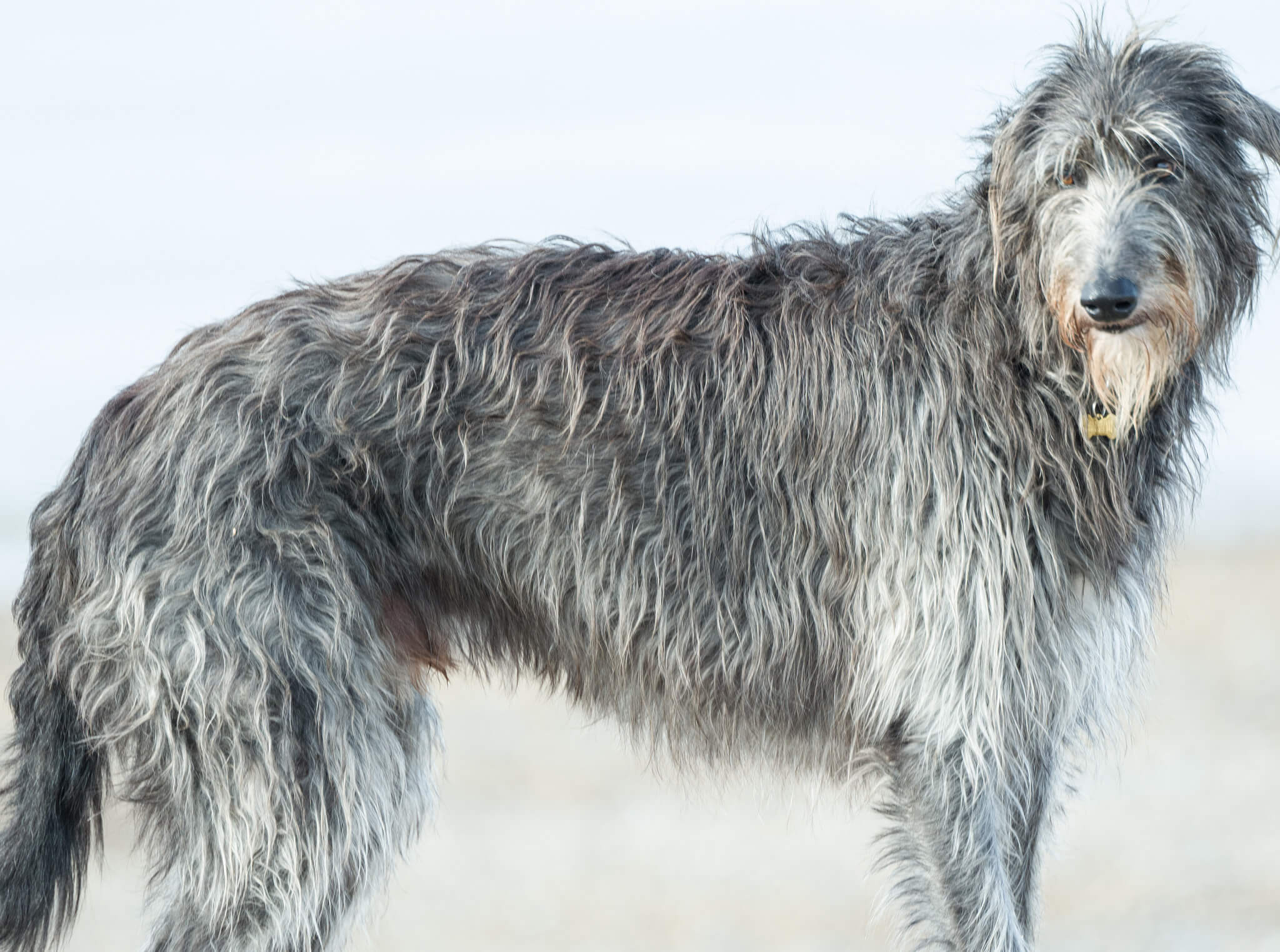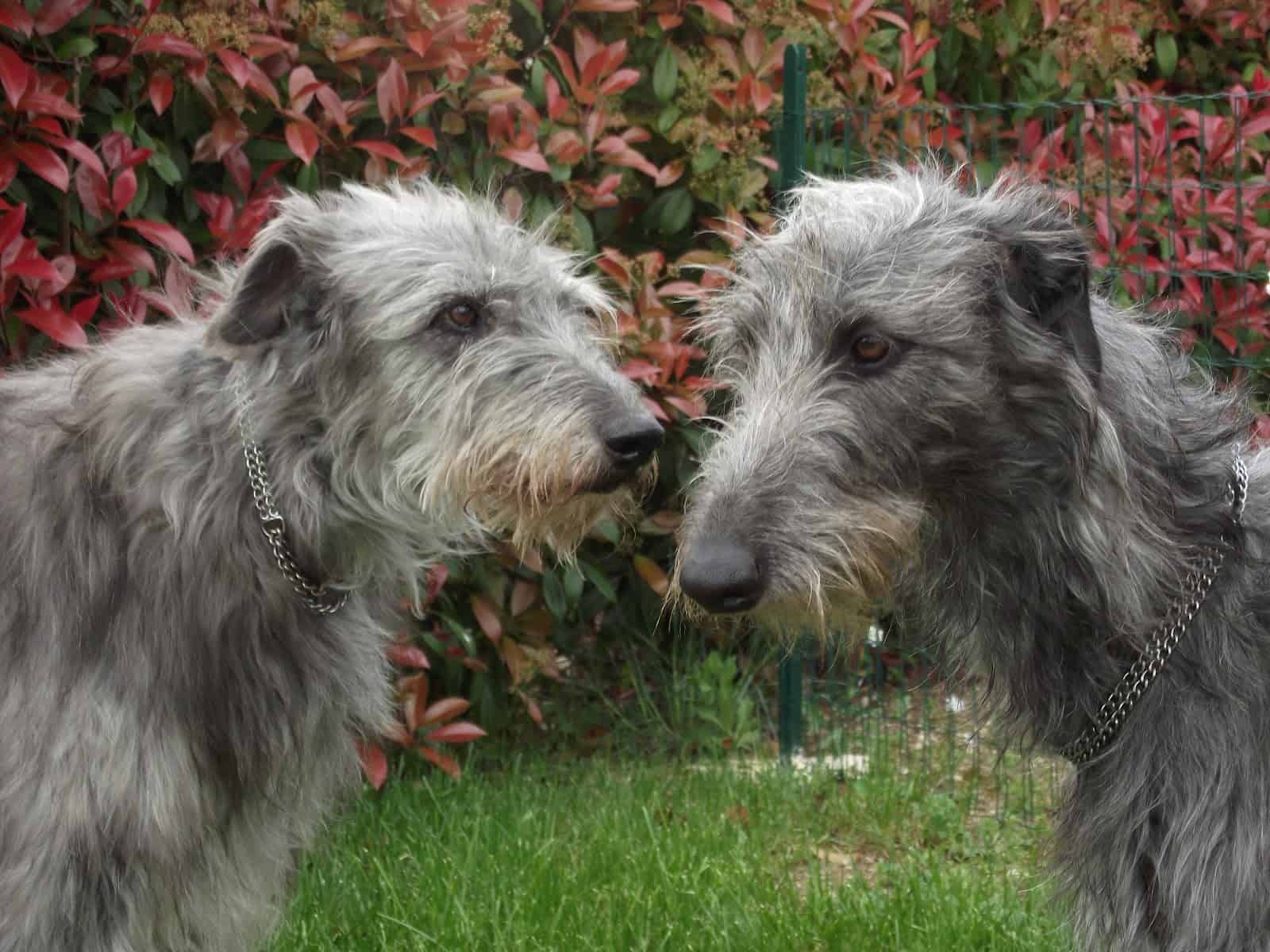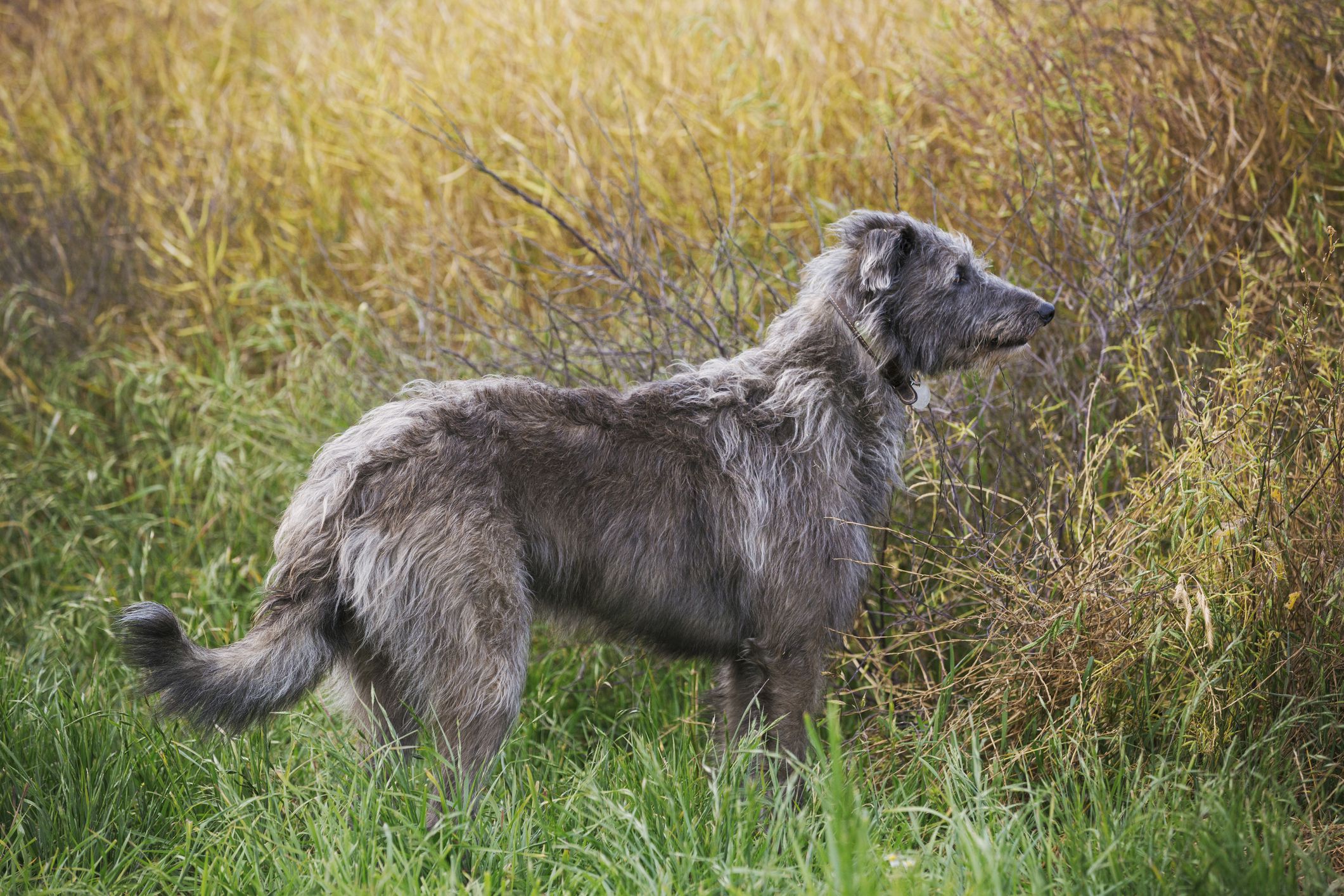
The Scottish Deerhound, often referred to as the "Royal Dog of Scotland," has a storied history dating back to ancient times. Originally bred to hunt the giant red deer of the Scottish Highlands, these dogs were prized by nobility for their speed, strength, and courage. Ownership of a Deerhound was once restricted to nobility, emphasizing the breed's prestige.
Their numbers dwindled with the decline of large-scale deer hunting and changing social structures, but devoted enthusiasts preserved the breed through careful breeding, ensuring the Scottish Deerhound's legacy would continue into modern times.
The Scottish Deerhound remains a somewhat rare breed, cherished by a dedicated group of admirers. Although they are not widely popular as household pets due to their size and exercise needs, they are highly respected in the world of dog shows, lure coursing, and among sighthound enthusiasts.
Their gentle disposition and regal presence have made them beloved companions for those who have the space and understanding to accommodate them.
The Scottish Deerhound is a tall, dignified sighthound with an athletic and graceful appearance.
• Height: 28–32 inches (71–81 cm)
• Weight: 75–110 pounds (34–50 kg)
• Build: Tall, lean, yet powerful
• Coat: Harsh, wiry, and somewhat shaggy
• Color: Various shades of gray are most common, but brindle, blue, and fawn are also seen
• Head: Long and narrow, slightly tapered
• Eyes: Dark, soft, and intelligent
• Ears: Small, folded back (rose ears), semi-erect when alert
• Tail: Long, tapering, and carried low
The Deerhound's rough coat and noble bearing perfectly suit its rugged Highland heritage.
Despite their impressive size and hunting background, Scottish Deerhounds are incredibly gentle and loving.
• Affectionate: Deeply bonded with their family and crave close companionship.
• Gentle: Known for their calm and sweet nature, especially with children.
• Independent: Retain a certain sighthound independence but are usually eager to please.
• Quiet: Rarely bark; generally very serene indoors.
• Athletic: Need space and opportunity to run, fulfilling their sighthound instincts.
They are often described as “gentle giants” — dignified yet loving.

The Scottish Deerhound is ideal for:
• Families seeking a calm and affectionate large breed
• Homes with large, securely fenced yards
• Owners who appreciate independent but gentle personalities
• Those looking for a low-maintenance, dignified dog
However, it may not be ideal for:
• Apartment dwellers
• Owners looking for a highly trainable or protective dog
• People unable to meet their exercise needs
• Homes with fragile objects — the Deerhound's size and tail can accidentally cause chaos
Scottish Deerhounds require thoughtful care tailored to their size and sighthound instincts.
• Exercise: Moderate to high; they enjoy long walks and safe sprints.
• Training: Positive reinforcement is key; early socialization is beneficial.
• Grooming: Weekly brushing to manage their wiry coat; occasional hand-stripping for show dogs.
• Living Environment: Need space to stretch out and secure fencing to safely roam.
• Feeding: Diet should support joint health and be suited for large, deep-chested breeds to minimize the risk of bloat.
Their growth periods must be carefully managed to prevent orthopedic issues.
Scottish Deerhounds are generally healthy but prone to certain conditions:
• Dilated cardiomyopathy (heart disease)
• Osteosarcoma (bone cancer)
• Bloat (gastric torsion)
• Hypothyroidism
Their typical lifespan is 8 to 11 years, with good care extending both life and quality of life.

• Irish Wolfhound: Larger and heavier than the Deerhound; both are gentle giants but the Wolfhound tends to be slightly more placid.
• Greyhound: Much smaller and faster; Greyhounds are more common and easier to exercise in smaller spaces.
• Borzoi: The Borzoi is similarly elegant but has a more refined, silky coat and a slightly more aloof demeanor.
If you seek a calm, affectionate, and truly regal companion who combines the elegance of a sighthound with the tenderness of a family dog, the Scottish Deerhound could be perfect. They need space, gentle training, and lots of love to thrive.
Prospective owners should be prepared for the size-related challenges of owning such a giant, gentle breed.
Finding a Scottish Deerhound may involve patience, as reputable breeders are relatively few. Health testing for heart issues and careful puppy rearing are essential. Rescue organizations occasionally have Deerhounds or Deerhound mixes available for adoption.
United Pet Club can assist with microchip registration, health monitoring resources, and ongoing support for new Deerhound owners.